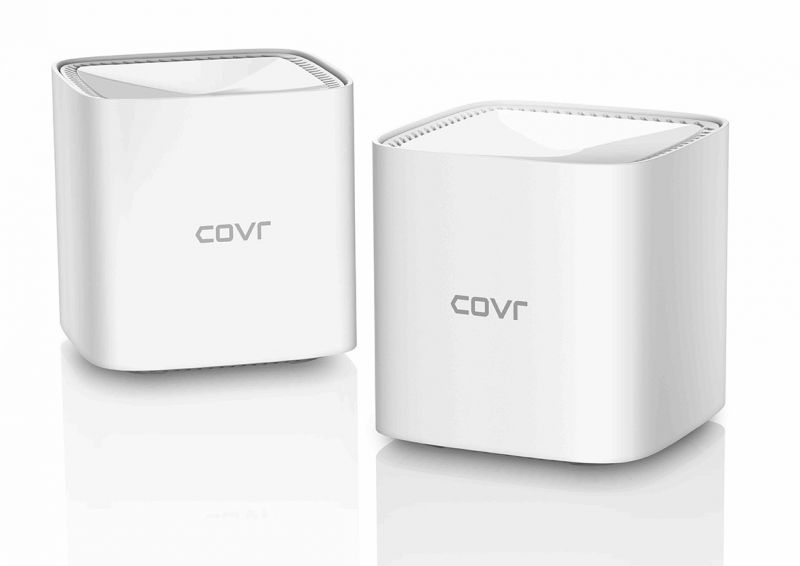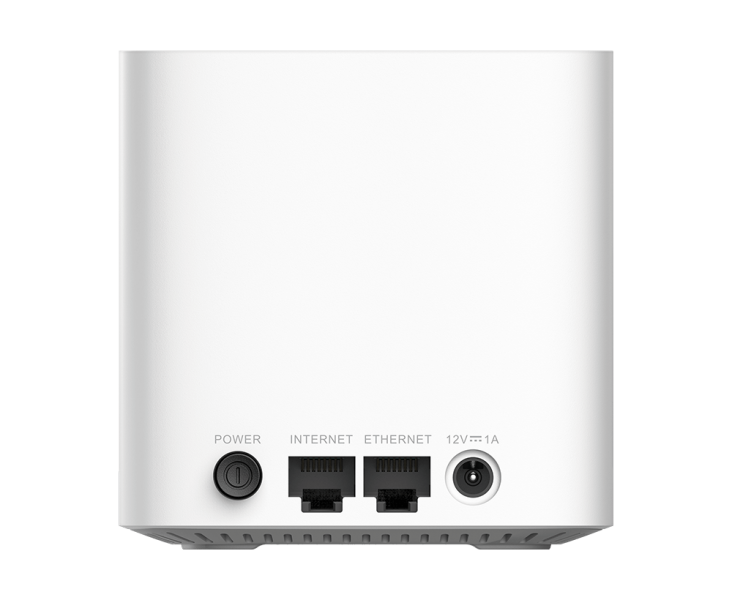 The D-Link COVR-1102 was launched on 5 May 2020, one of the world’s first Wi-Fi Certified EasyMesh™ home and home office mesh systems. Our good friends at D-Link was keen to get our thoughts on it, and at DRN, we are always excited to play with new technology.
The D-Link COVR-1102 was launched on 5 May 2020, one of the world’s first Wi-Fi Certified EasyMesh™ home and home office mesh systems. Our good friends at D-Link was keen to get our thoughts on it, and at DRN, we are always excited to play with new technology.
I had just completed the COVR-2202 review at my humble abode, and the Wi-Fi coverage I could get was making my dad a bit green-eyed with jealousy. I could understand his pain as I was unravelling his setup whilst I was crashing out at his granny flat for a few months earlier in the year. He jumped at my offer to set up the COVR-1102 over at his place and deprecate all the little bits and pieces he is constantly adding on.
What is Wi-Fi EasyMesh?
Wi-Fi CERTIFIED EasyMesh™ brings a standards-based approach to Wi-Fi networks that utilise multiple access points (APs), combining the benefits of easy to use, self-adapting Wi-Fi with greater flexibility in device choice that comes with interoperable Wi-Fi CERTIFIED™ devices. Wi-Fi EasyMesh™ networks employ multiple access points that work together to form a unified network that provides smart, efficient Wi-Fi throughout the home and outdoor spaces.
First Impressions
The COVR-1102’s appearance is vastly different from the COVR-2202. For starters the COVR-1102 is about half the height, and instead of tall triangular shaped nodes, it is white little cubes that is about double the size of a standard Rubik’s cube.
Unlike the bigger brother the COVR logo does not light up to indicate the status. The top of the unit is dimpled and a single LED resides right in the center of the dimple.
The number of ports on the back of the units down from three ports on the COVR-2202 to two on the COVR-1102. There is no node A anymore to be the primary mode, just grab the one closest to your hand and make it happen.
The units are light weight, discreet and easy to blend in with other things you have lying around.
 Configuration
Configuration
I did wait a little while until the COVID-19 restrictions were eased a bit before I did this. I was not taking any chances with my parents’ health and even then I minimised the time and interactions at their place.
For whatever reason, dad has allowed someone else to make changes to the network that I set up way back. So when I started to unravel the spaghetti bowl I suddenly realised what should be a flat network was barely held together by duct tape. I did a quick IP subnet check to confirm what I thought I knew, and wholesale turned off his router, extenders and whatnots and start with a clean slate.
Originally I was going to use the D-Link Wi-Fi app to set it up off my phone, except that I could not add another COVR system to my account. It the interest of efficiency, I opt to do the configuration via the web browser instead which was an absolute breeze. As I needed to change the IP address anyway, I could do it all in the web browser instead of switching from the app.
Life was as simple as connecting to the default Wi-Fi network with the information provided in the box, use a browser to bring up the http://covr.local URL and it was ready for me to manually set it up. The setup wizard provides a bouncing ball approach to get all the basics up and running.
Because I elected to not use the app to set up the COVR-1102, I had to use the provided LAN cable to pair the second node. This was a simple as connecting the two nodes with the provided LAN cable in the ethernet port on both units, power on the second node and wait until the LED changed from blinking orange to solid white. At this point I can disconnect the Ethernet cable and relocate the second node to another position in the house.
In Use
To set the scene, WiFi coverage has always been a bit iffy at Dad and Mum’s place. It’s a longish house that is solidly built and the NBN termination is at a spot in the middle of the house in the dining area just off the kitchen. The other side of the house is where all the rooms are, plenty of walls along the way. The front of the house in particular is always a bad spot for coverage, and Dad had an Xiaomi extender to extend the signal to the front. A second Xiaomi extender goes out to boost some signal into the granny flat out the back.
The beauty of the COVR-1102 is that the two nodes are effectively doing the job of what he had previously had running. The immutable requirement meant one node is close to the Arris device. The second node is placed at the entrance hall of the house, providing coverage all along that side right into the very front bedroom where mum likes to watch her cooking shows on YouTube before bed. This is a very important goal because she likes to give me food to try, and it was the first stop to tested the signal strength!
The coverage into the granny flat was no better or worse than before, bearing in mind it is going through two brick walls. Because I have ran CAT6 cables into the granny flat when it was being built, I can easily add another COVR-1102 node there using Ethernet connection. Using Ethernet to another node is a feature that was not available with the COVR-2202 nodes.
Aside from the improved Wi-Fi coverage, Dad was particularly happy with the improvements in throughput now that all the legacy devices are off his network. He is now in the modern age with AC1200 throughput instead of the mishmash of protocols he had added in over time unbeknown to me. Sure, throughput is subjective, depending on the signal strength, NBN connection, but the important part is, Dad is happy with the improvements and that is a win.
 Other Features
Other Features
The EasyMesh compliance means it is easy to grow your network without proprietary roadblocks. Whilst this is not tested in the current review, I am looking forward to when I need to introduce another device into the mix.
Parental control is now part of the core configuration with the D-Link app or the web browser. Unlike the COVR-2202 which required the D-Link defender app to be installed separately, I can now manage this all in the same area. The fundamental principle behind it has not changed, you can set global rules or individual profiles and control selected devices.
Just like the bigger brother, the COVR-1102 has Alexa, Google Assistant and IFTTT integration.
IP address reservations is limited to 24.
Gripes
For what it is, the COVR-1102 has little to complain about. The minimal number of Ethernet ports is a bug bear for me. I would be more amenable to the two port configuration if the COVR-2202 had more than 3 ports, giving it a more distinct difference. Even for a fairly generic home setup, this would rapidly be a limiting factor.
Conclusions
Overall the COVR-1102 experience is more refined than the COVR-2202. My previous experience did come into play in a small way but the setup is easy enough that I could feasibly let my dad do it himself with some guidance.
The D-Link COVR-1102 might be the little brother, but it does deliver the punch where it is needed. There are a lot of pros going for it, and the refinement in interface makes a good use case for people like grandparents who are occasional carers of young grandchildren – we all know we cannot totally avoid screen time. Best of all with such simple and discreet units, you can place them anywhere without it screaming “tech gadget”. My dad has one unit hidden in plain sight at the entrance hall with some decorations around it.
Considering the cost of entry, it is certainly worthy of consideration. The D-Link COVR-1120 AC1200 Seamless Mesh Wi-Fi System is available for RRP AUD$299.95, shop around because it is available for cheaper.
DRN would like to thank D-Link for their on-going support.
Specifications
Mesh System : Yes
Ethernet Speed : Gigabit Ethernet
Warranty : 3-Year Limited Warranty
Dimensions (Size) : 92 x 92 x 92 mm
NBN/UFB Support : FTTP / FTTC/ HFC / Satellite / Fixed Wireless
LAN Port(s) : 2
CD-less Install : Yes
Guest Network : Yes
Parental Controls : Yes
mydlink enabled : No
Wireless Technology : AC1200 (300+867Mbps)
Wireless Bands : Dual Band
WAN Interface : Gigabit Ethernet
VoIP : No
Wave 2 MU-MIMO Wi-Fi : Yes
Mesh : COVR Series


